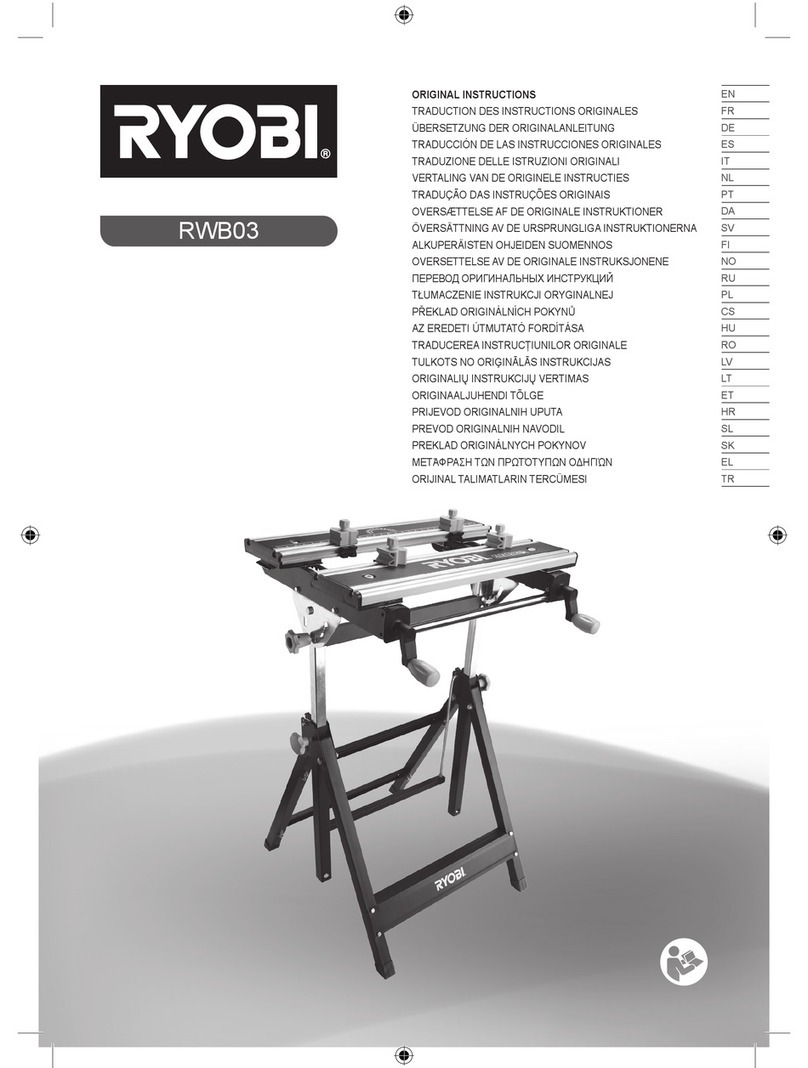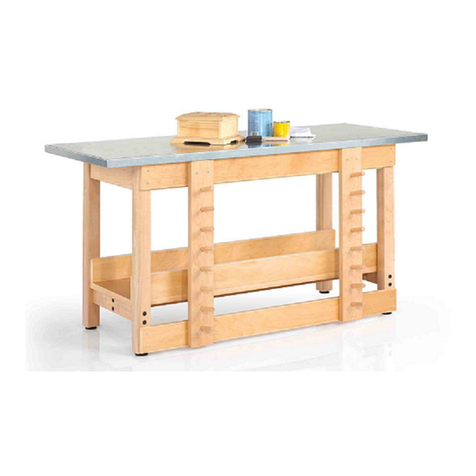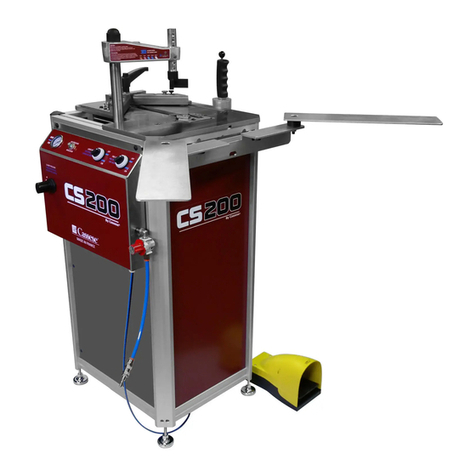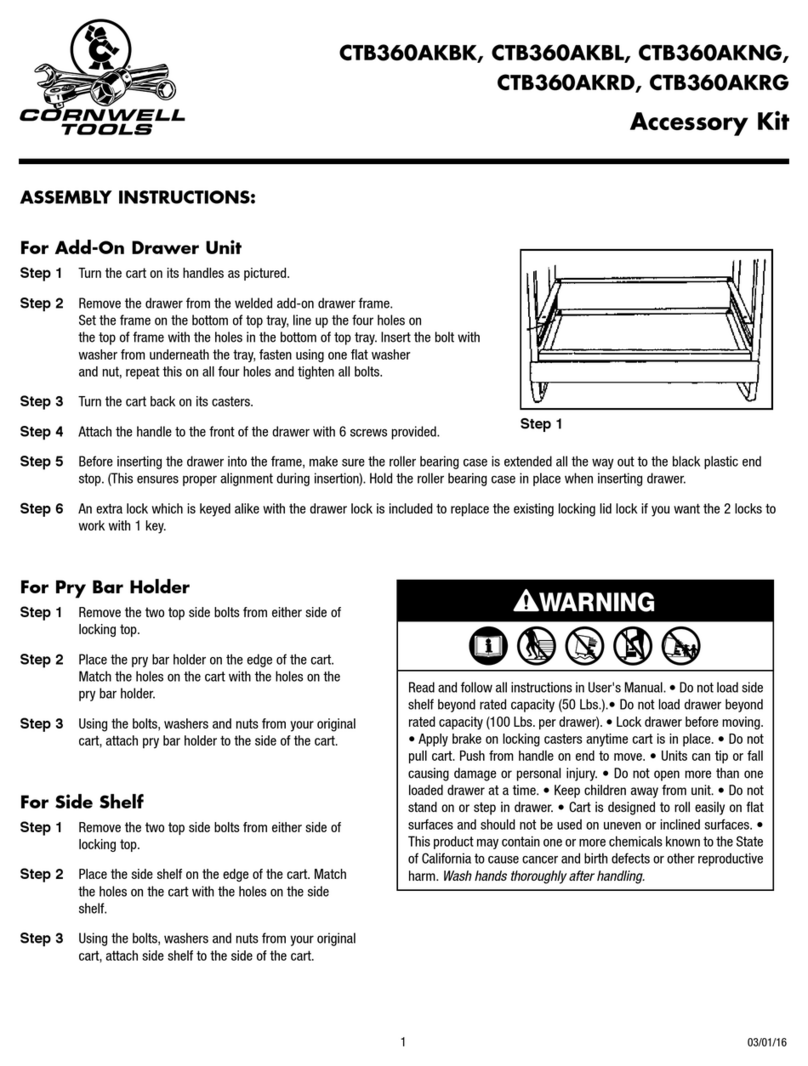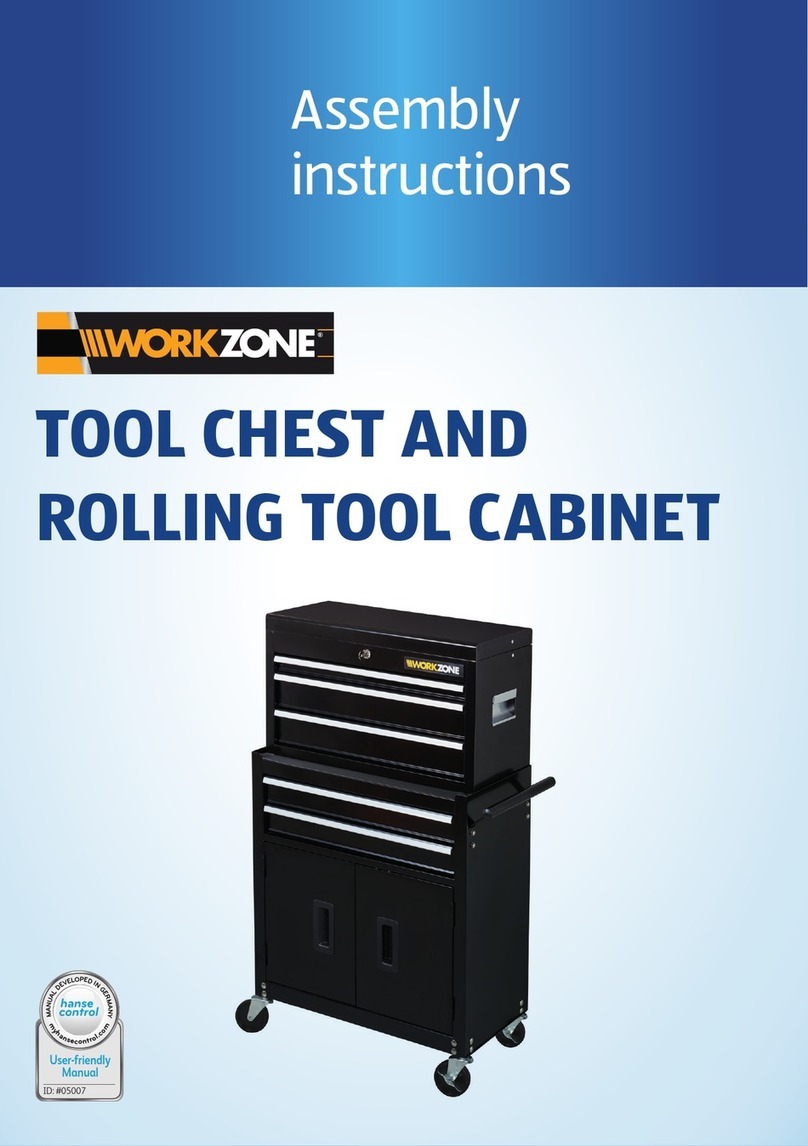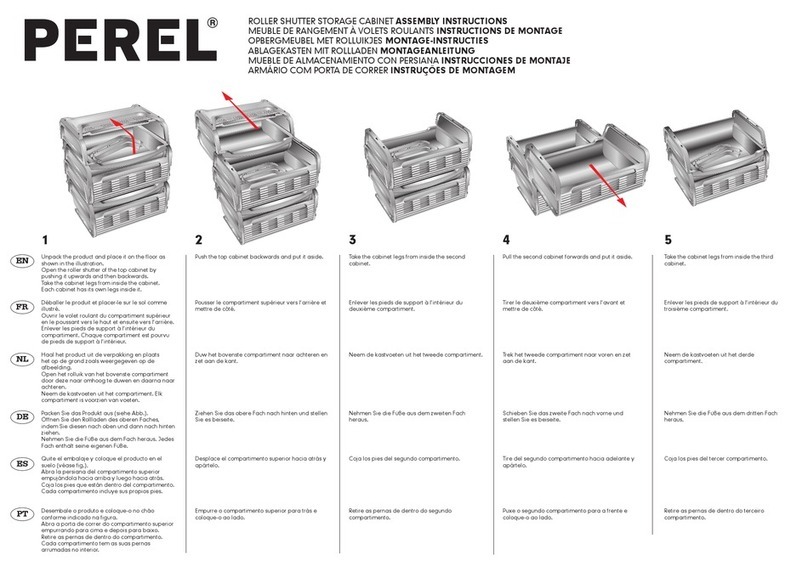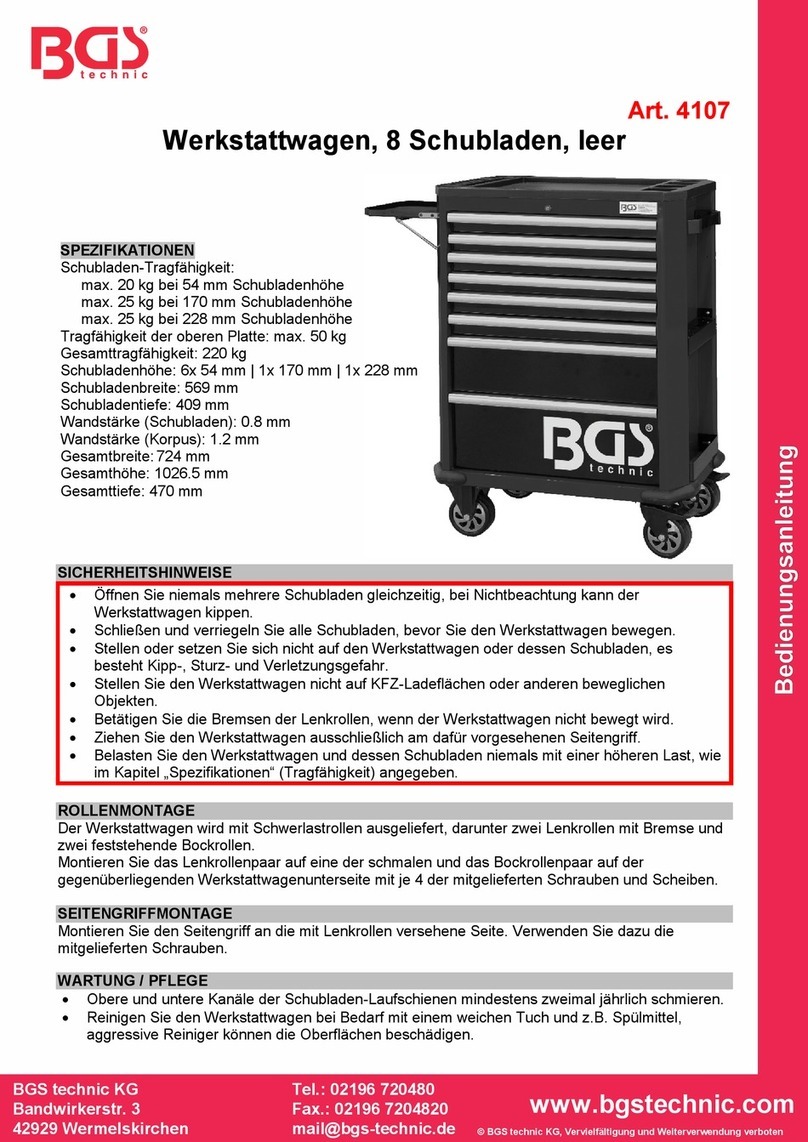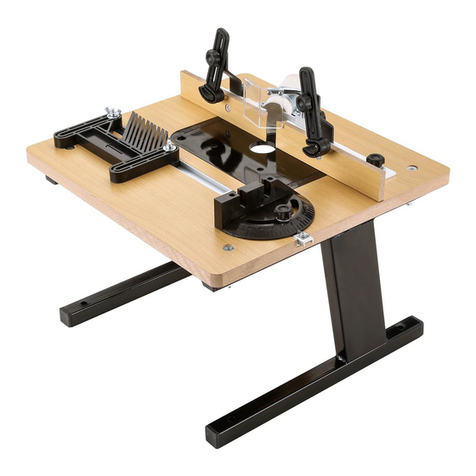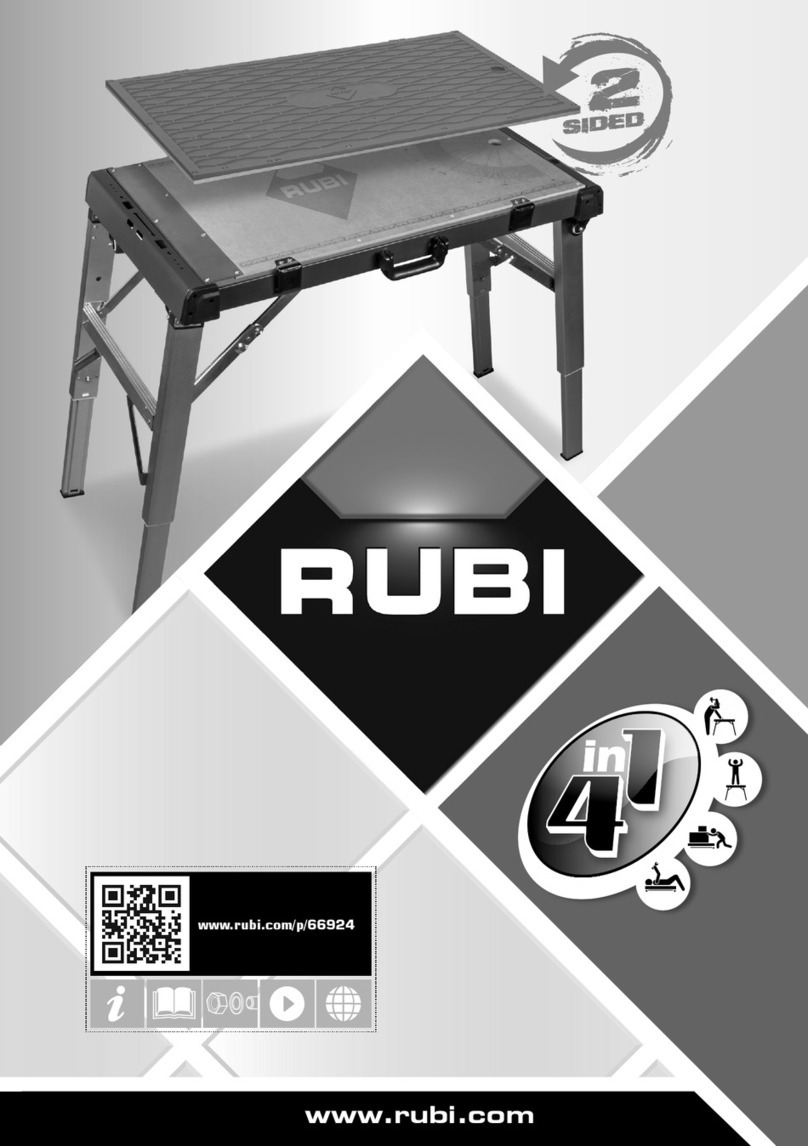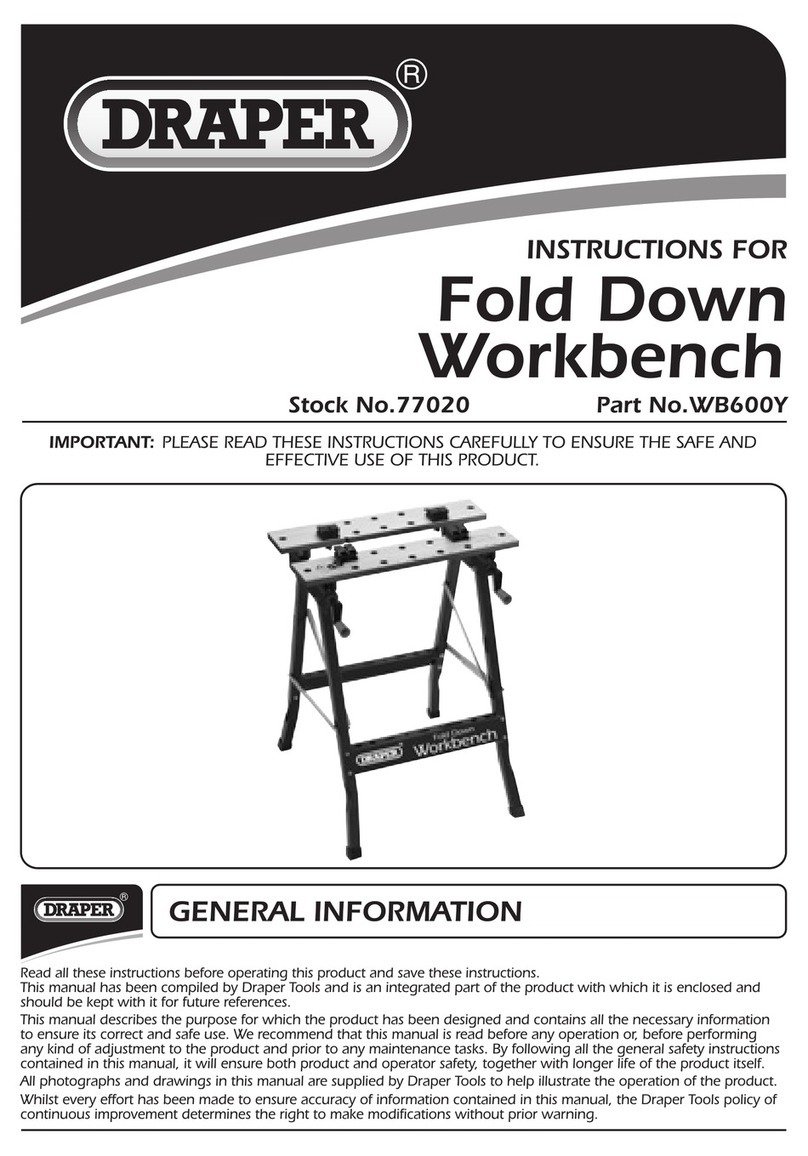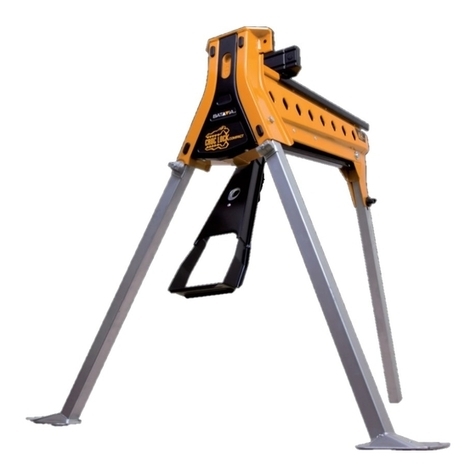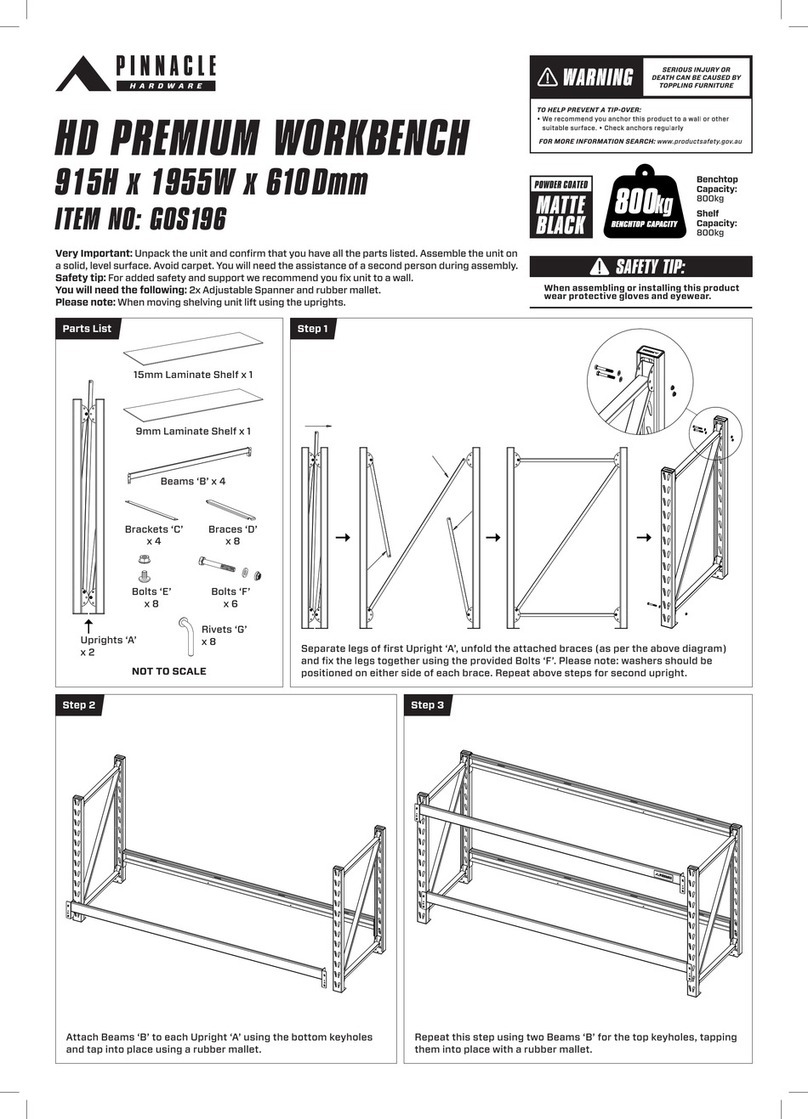
2
Top Assembly
4. Near each end of the upper rails on the trestles there
is a hole. These are used to fasten the bench top,
which has four mating pilot holes, to the base. Place
the bench top over the base, aligning the mounting
holes. Using a 9/16"socket or wrench, secure the top
to the base with four 3/8"× 3"lag screws and flat
washers. Firmly tighten the eight hex nuts holding
the base together, and cover the counterbores with
the plastic caps provided. Adjust the levelling feet as
required to eliminate any rocking.
5. Slide the front vise into the holes in the front vise
jaw and, using a #3 Robertson®screwdriver (square
drive), fasten the two together with three #14 × 11/2"
flat-head screws. Wind the front vise jaw assembly
into the mating holes located on the left front corner
of the bench.
6. Install the Veritas®Twin-Screw Vise following the
instructions provided with it.
7. Install the three vise handles onto the vise tees, using
a #2 Phillips screwdriver to fasten the end caps.
Note: One of the handles is equipped with a speed knob;
this is intended to fit onto either tee of the twin-screw
vise for faster opening and closing.
Using your Veritas®Workbench
The Veritas®Workbench, with its Veritas® Twin-Screw
Vise, front vise, matrix of mating 3/4"bench dog holes and
four brass bench dogs, provides an extremely versatile
work surface with many clamping possibilities.
The twin-screw vise has some features that may not be
obvious. Besides its two clamping screws that eliminate
all possibility of racking, a spring-loaded drive/lock
pin lets you disengage the connecting chain drive for
controlled skewing needed to equalize pressure on
slightly out-of-square work. This is activated by simply
pulling back on the brass knob located on the right-
hand tee. Disengaging the drive/lock pin lets you turn
either screw independently of the other to produce the
required skew.
Warning: The vise should never be skewed more
than one full turn in either direction.
To realign the jaws, turn the handle you moved in the
opposite direction (back to how it was) and you will
hear and see the drive/lock pin “click” back into place.
If you try to disengage the pin with the jaws clamped
tight, you may find that you have to first slacken the vise
screw containing the pin.
The drive/lock pin also acts as a shear pin. If you apply
excessive force to either screw, the pin will shear before
the vise becomes damaged. A spare pin is enclosed
should this ever occur. An exploded view of the twin-
screw vise is shown in Figure 2.
Main Chain Cover
Set Screws
Chain Cover End Cap
To balance the chain,
squeeze together in the
center before tightening
the set screws.
Balancing the chain
prevents it from skipping
a tooth on the sprocket.
Tee
Figure 2: Veritas®Twin-Screw Vise. Figure 3: Balancing the chain on twin-screw vise.


